Guitar lessons for beginners
Learn how to play guitar with our video tutorials

Guitar lessons for beginners: intro
Learning how to play the guitar can be fun and rewarding, but it's difficult to know where to start. Thankfully, MusicRadar has put together a series of free video lessons with tab to help out.
Whether you're a complete beginner or an expert looking to tighten your technique, there's something here for you.
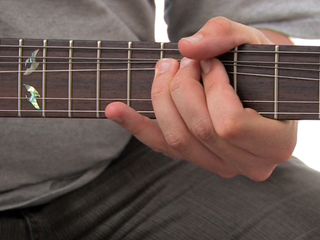
String bending
String bending is one of techniques that separates the guitar from other instruments. It allows you to create expressive, vocal phrases.
This lesson shows you the correct techniques to employ to help you bend in tune without damaging your fingers.
Click here for video lesson
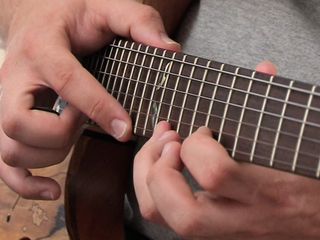
Tapping
Tapping is one of the most impressive sounding techniques a guitarist can master. Apart from looking cool, it's an easy way to add fast, fluent licks to your playing.
This lesson shows you the basics of tapping. It covers choosing which finger to tap with, how to strike the string properly and basic tapping patterns.
Click here for video lesson
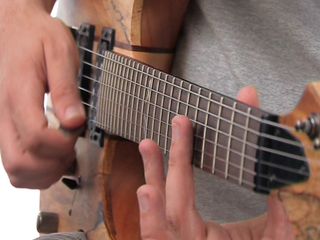
Natural harmonics
Natural harmonics produce a chiming sound that lots of players use in their music. They are produced by placing your fingers lightly directly over the frets and can add contrast to a rhythm part, accent notes in a heavy riff or create screaming divebombs.
This video lesson shows you how to locate the most common (and easiest to play) natural harmonics and shows you how to play them correctly.
Click here for video lesson
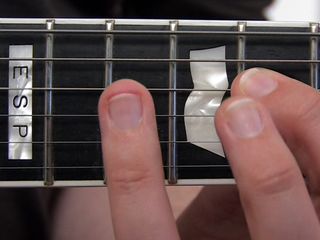
Hammer-ons
You can change between two notes by picking them separately, but if the second note is higher than the first in pitch, you can play what's called a hammer-on.
A hammer-on will make the transition between two notes smoother, which will make your playing sound more fluent.
This video lesson shows you how to perform hammer-ons correctly and provides you with two examples to try for yourself. These examples come with free tab.
Click here for video lesson and free tab
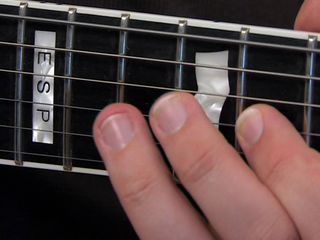
Pull-offs
You can change between two notes by picking them separately, but if the first note is higher than the second in pitch, you can play what's called a pull-off.
A pull-off will make the transition between two notes smoother, which will make your playing sound more fluent.
This video lesson shows you how to perform pull-offs correctly and provides you with two examples to try for yourself.
These examples come with free tab.
Click here for video lesson with free tab
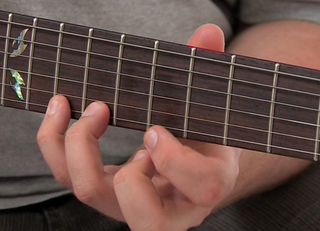
Combining hammer-ons and pull-offs
If you want your playing to sound as smooth as possible you need to master combining hammer-ons and pull-offs.
This video lesson shows you how to combine hammer-ons and pull-offs to create flowing licks.
Click here for video lesson
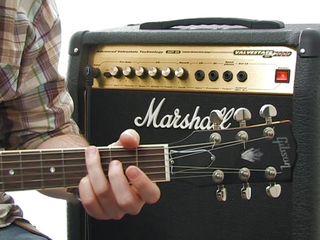
How to use your amp
For most budding guitarists, the big attraction of the electric guitar is that it lets you rock out, and rock out loud. However, it's no good plugging your guitar into an amplifier if you don't know what the controls do.
If you've just got your first amplifier out of the box and don't know where to start, then this is the tutorial for you. We explain how the controls work and what they do, and give you some pointers towards dialing in a decent sound.
The selection of available controls will differ from amp to amp, but we've tried to make this as universal as possible. So, if you are mystified by middle or befuddled by bass, look no further...
Click here for video lesson

Fretting tips
Many guitarists are in such a rush to get to the flashy, exciting aspects of guitar playing, like two-handed tapping or two-octave sweep arpeggios, that they overlook the basic skills these more advanced techniques build from.
The problem, of course, is that without a solid foundation of basic guitar skills it’s difficult to progress to more advanced techniques and maintain accuracy. The end result is almost always a sloppy player.
To avoid this situation it’s important to pay attention to the fundamental aspects of guitar, especially if you’re just starting out, as it’s much harder to correct a bad habit once it’s been ingrained over a period of time.
This tutorial shows you how to position your fingers correctly to avoid fret buzz and shows you a few pitfalls to watch out for on you way to flawless fretting technique.
Click here for video lesson
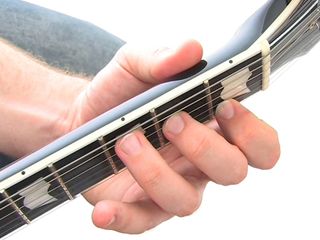
Perfect open chords
Fretting chords can be a tricky business, especially if you've just started playing. There are quite a few factors to bear in mind, like finger and thumb positioning, fretting accuracy and strumming the correct strings.
It's worth taking the time to get your technique right at the beginning of your playing 'career' as it's more difficult to undo poor technique once it's been ingrained over a period of time. Although it can be frustrating working on seemingly insignificant changes to your technique, like small change in thumb position, it will pay off when you can fret chords perfectly without thinking about it.
This tutorial shows you how to position your fingers and thumb correctly to avoid fret buzz and dead strings as well as showing you how to avoid unnecessary tension that may cause damage to your precious fretting hand.
We've also put together a set of 10 chords that we feel every guitarist should know. Make sure you learn the names as well as the finger patterns. Also check out our lesson on fretting tips for more information on good basic guitar technique.
Click here for video lesson
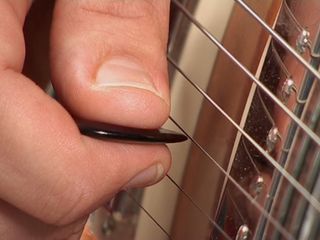
Pinch harmonics
Pinch harmonics (sometimes referred to as ‘pinched harmonics’) are one of the most difficult techniques to master on the guitar. The problem is that, unlike a lot of other techniques where you start slowly and build up speed, until you master the techniques required to play them you won’t get anything close to the right sound.
Needless to say, a lot of patience is required to get pinch harmonics right. Make sure you pay attention to every aspect of the video lesson as missing out just one technique will result in hours of pinch harmonic-less frustration.
This video shows you all the techniques you’ll need to execute pinch harmonics perfectly including: setting your amp correctly, finding node points, how to hold the pick and how to strike the strings correctly.
Click here for video lesson

Minor pentatonic scale
This beginners' video tutorial teaches you about minor chords, and moves onto the minor pentatonic scale.
Just in case you have been living in a cave on Mars, with your fingers in your ears and your eyes shut, the minor pentatonic is the most important scale in guitar music. It has a dark and moody sound, and you can use it pretty much every time you see a set of chords that start with a minor chord of the same letter name (E minor pentatonic with an E minor chord).
Click here for video lesson, audio and free tab

MusicRadar is the number one website for music-makers of all kinds, be they guitarists, drummers, keyboard players, DJs or producers...
- GEAR: We help musicians find the best gear with top-ranking gear round-ups and high-quality, authoritative reviews by a wide team of highly experienced experts.
- TIPS: We also provide tuition, from bite-sized tips to advanced work-outs and guidance from recognised musicians and stars.
- STARS: We talk to musicians and stars about their creative processes, and the nuts and bolts of their gear and technique. We give fans an insight into the craft of music-making that no other music website can.










